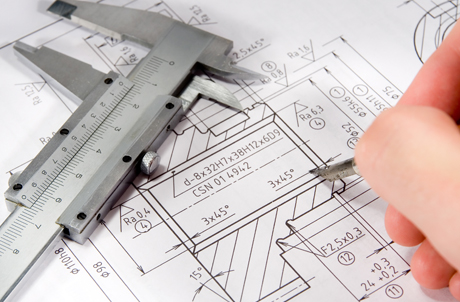What's New in Design Safety
What's New in Design Safety


Gone are the days when a design engineer could focus mainly on improving a product’s design functionality. With higher safety levels now both achievable and economical, the engineer’s role in delivering design safety has broadened considerably.
At their disposal are a host of new objective analytic techniques to identify hidden hazards and potential problems, determine design countermeasures and remedies, and assess and categorize residual risk. But with these new tools comes a responsibility to manage the consequences of interjecting protective mechanisms and safety devices into a product’s design and operation. Below is a rundown of the benefits, burdens, and opportunities of designing for safety.
Designing for Safety
In a simpler time, safety features and accessories intended to protect equipment operators were considered the responsibility of the user and owner, not the design engineer. But today, more stringent safety standards and rapid technological advances mean engineers can more easily ferret out a product’s potential for failure and then design to prevent it. While these techniques provide management and customers assurance the products they use will help andnot hurt, some design-safety mechanisms can cause problems if not used wisely.
It’s not enough, for example, to simply add a safe-stop mechanism that shuts down just the part of a machine where the problem occurs so that once fixed, operation can quickly resume. That mechanism may require the addition of other safety features—like self-monitoring, redundancy, faults that fail safe—to work properly. Because such systems are commonly used in high-risk situations, they often require special attention.
The impact of a protective mechanism or safety device on other components must be considered to prevent secondary faults or errors, including the possibility that normal operation be resumed prematurely. Maintenance checks of the mechanism also are crucial as over time it may become inactive or unreliable without any warning.
The growing importance of software to mechanical systems is placing other burdens on design engineers. Far too many programs exhibit unexpected bugs, lockups, memory errors, out-of-bounds errors, even excessive test errors or failures. Hence, effective software reviews should begin early enough in the development and design process so that errors can be fixed, including those difficult-to-find-and-solve design safety problems that often emerge much later.
Extended field-testing, not just bench testing, is needed to head off design safety problems before the customer has to experience them.
Backup Warnings
Safety warnings can be an effective supplement to engineering safety design. A warning can’t prevent harm, however, unless clearly conveyed and tailored for the right stakeholder. Whereas warnings for users are designed to identify hazards and risks to help them avoid personal harm, the information provided to customers is meant to give them what they need to know to weigh any associated risks before they buy the product.
Getting the wording just right is crucial as warnings that raise too many alarms can trigger information overload that may undercut the original intent.
Safety Around the World
It’s no longer enough to satisfy U.S. regulations and standards. In order to tap into international markets, businesses must broaden the design process to take into account the global regulatory landscape as well as the forces driving overseas consumer-products markets.
For their part, engineers must stay abreast of safety requirements abroad to determine the design and manufacturing impact on their work. For example, the European Union’s RoHS (Restriction of Hazardous Substances) directive restricting lead-based alloys used for solder and plating requires U.S. and other non-EU manufacturers to engineer around new issues of connector reliability and performance, which could change the manufacturing process and create new avenues of failure to explore.
Many nations and international organizations such as the United Nations also are spearheading regulatory changes designed to eliminate barriers to trade. For example, the European Union’s REACH (Regulation, Evaluation, Authorization, and Restriction of Chemical Substances) program is helping to bring about a global system for the classification, labeling, and packaging of chemicals and products that contain them to enable shipment of uniform products anywhere in the world.
The design-safety implications of this and other related programs have some engineers wondering whether it’s time to begin proactively designing products and systems with worldwide safety trends in mind.
End of Service Life Issues
Engineers who do their jobs too well (i.e., design products that last and last), must face other complex issues. How should end-of-life disposal and recycling be approached for products with long service life when new product safety requirements can be passed into law at any future time? What kind of exculpatory documentation should be retained regarding safety analyses performed when they could potentially incriminate those involved with design and development at some future point? Where operational teamwork is required on a system, how can studies of operator interactions be performed to reveal design data without infringing on privacy or creating an appearance of bias?
Addressing these complex issues can require engineers to look outside their discipline for answers.
[Adapted from “Trends in Design Safety,” by George A. Peters and Barbara J. Peters, for Mechanical Engineering, January 2010.]
In a simpler time, safety features and accessories intended to protect equipment operators were considered the responsibility of the user and owner, not the design engineer.




